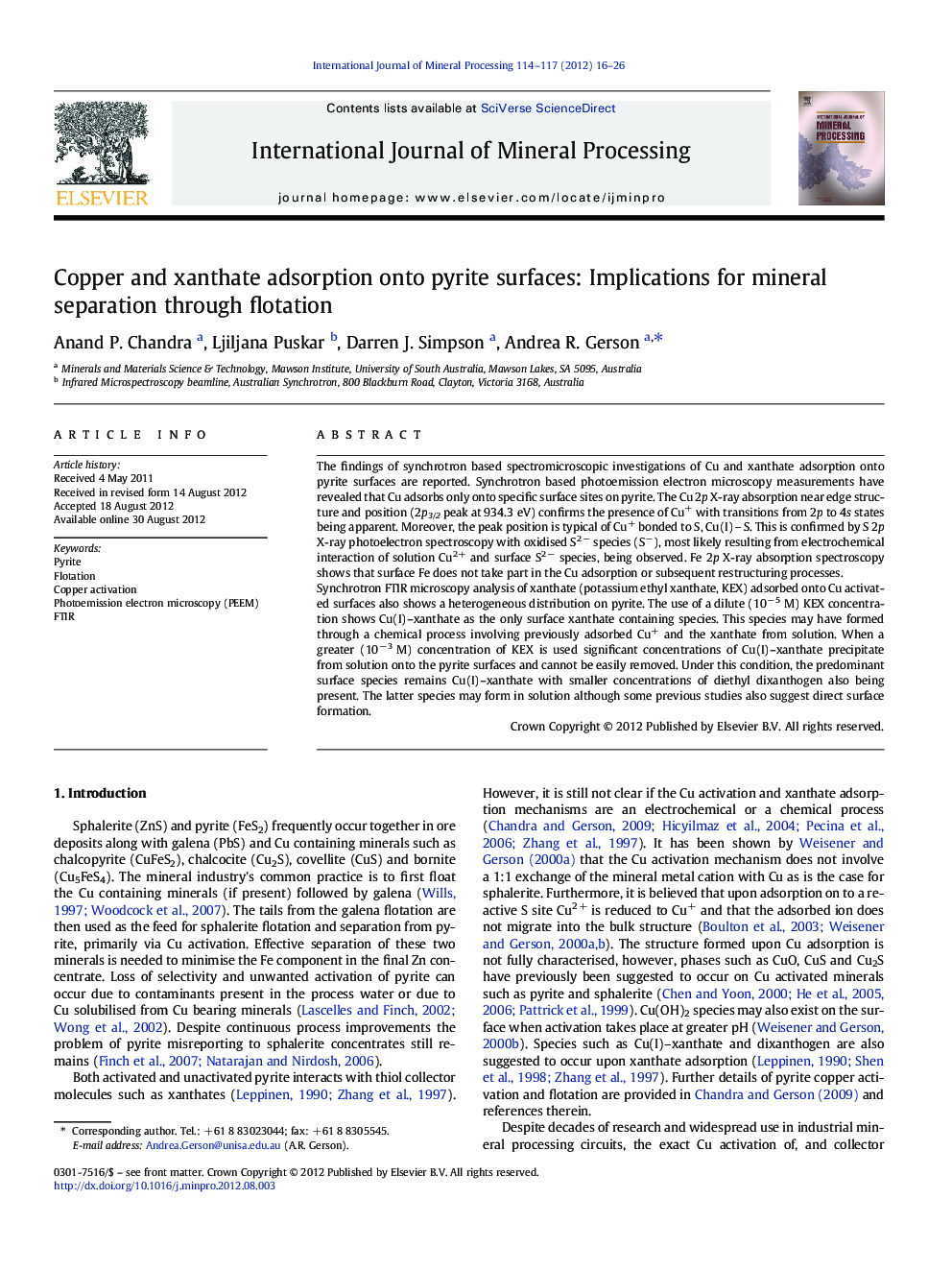| Article ID | Journal | Published Year | Pages | File Type |
|---|---|---|---|---|
| 214121 | International Journal of Mineral Processing | 2012 | 11 Pages |
The findings of synchrotron based spectromicroscopic investigations of Cu and xanthate adsorption onto pyrite surfaces are reported. Synchrotron based photoemission electron microscopy measurements have revealed that Cu adsorbs only onto specific surface sites on pyrite. The Cu 2p X-ray absorption near edge structure and position (2p3/2 peak at 934.3 eV) confirms the presence of Cu+ with transitions from 2p to 4s states being apparent. Moreover, the peak position is typical of Cu+ bonded to S, Cu(I)S. This is confirmed by S 2p X-ray photoelectron spectroscopy with oxidised S2 − species (S−), most likely resulting from electrochemical interaction of solution Cu2 + and surface S2 − species, being observed. Fe 2p X-ray absorption spectroscopy shows that surface Fe does not take part in the Cu adsorption or subsequent restructuring processes.Synchrotron FTIR microscopy analysis of xanthate (potassium ethyl xanthate, KEX) adsorbed onto Cu activated surfaces also shows a heterogeneous distribution on pyrite. The use of a dilute (10− 5 M) KEX concentration shows Cu(I)–xanthate as the only surface xanthate containing species. This species may have formed through a chemical process involving previously adsorbed Cu+ and the xanthate from solution. When a greater (10− 3 M) concentration of KEX is used significant concentrations of Cu(I)–xanthate precipitate from solution onto the pyrite surfaces and cannot be easily removed. Under this condition, the predominant surface species remains Cu(I)–xanthate with smaller concentrations of diethyl dixanthogen also being present. The latter species may form in solution although some previous studies also suggest direct surface formation.
► Synchrotron PEEM reveals that Cu adsorbs onto specific pyrite surface sites. ► Cu adsorption occurs when Cu2+(aq) interacts with S2–(surf) resulting in Cu(I)–S. ► Surface Fe does not take part in Cu adsorption or subsequent restructuring processes. ► Xanthate also adsorbs heterogeneously on Cu activated pyrite surfaces. ► Cu(I) xanthate, either formed on the surface or precipitated may be present.
